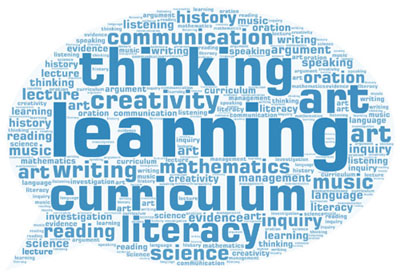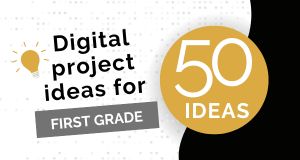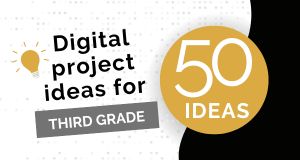6 Tips for Submitting a Successful Presentation Proposal
Ideas to help you craft a submission they cannot wait to accept

The call for proposals has come out for your favorite educational conference and now is the time to submit your own presentation proposal. Even if you’ve never submitted before, or have been rejected too many times, don’t despair; you have something valuable to share! Follow these key tips to help you craft a submission they cannot wait to approve.
1. Choose the right conference
This may seem like a strange place to start, but your ideas and experience need to match conference’s goals and level. If you are just getting started, submit a presentation to a district-level conference first and then move to a state-level conference. This way you can share these experiences as the proof of expertise needed for larger regional, national, or even international conferences.
2. Choose the right format
A lecture-style presentation is not the only way to share your experience and expertise at a conference. Many conferences are looking for presenters who are willing and able to lead round-table discussions, poster sessions, and hands-on workshops. With many students and teachers quarantined, during the COVID19 pandemic, presenters who can move beyond a lecture-style webinar are in high demand.
If you are new to presenting or sharing a classroom project, consider a poster session. In this format, presenters share their ideas from a table, bulletin board, and computer with participants who stop by based on your description and/or display. Attendees head to poster sessions when they want to get a lot of different ideas quickly and don’t want to commit to sitting through an hour-long presentation of unknown value.

Because you are dealing with multiple one-on-one or small group audiences, posters take the anxiety out of presenting to a large audience. While you always share a concise overview of your work, you end up sharing different ideas, strategies, and parts of your story depending on the questions and needs of each audience member. As participants ask questions, your presentation becomes more of a natural conversation and storytelling opportunity.
Hands-on workshops are another option for sharing your expertise, especially expertise with integrating a digital tool. Workshops are generally an additional cost and a way many conferences generate income. If you can attract people to and deliver a great workshop that participants have paid for, many conferences will see you as their partner and actually ask you to submit in future years. Most conferences provide a small stipend for giving a workshop, helping you pay for the additional cost of attending or coming early.
3. Read the guidelines
This one seems easy, but be sure to read the guidelines for submissions. Then, follow the rules and complete all requirements. Most proposal reviewers are full-time educators like yourself and appreciate a well-written and well-crafted submission that makes sense and answers all questions. If reviewers have an overwhelming amount of proposals, you don’t want to have yours thrown out because of a simple omission.
4. Explore last year’s program
If you want to know what types of sessions are accepted at any conference, explore their conference program from last year. What titles or topics were mentioned over and over? Even if these are not exactly your focus, you will get an idea of what conference leadership likes to include.

Go back to a previous year’s conference book or online schedule and look through the sessions you chose to attend. What attracted you to each session? Did the title catch your eye? How did you search? Which keywords did you look for?
5. Find connections to standards and research
While not all conferences require you to submit related research and standards, it is still a good idea to share standards and research that outline, clarify, and support the skills that students, teachers, media specialists, or administrators will gain from your presentation or as they implement projects and strategies you are sharing.
Conferences will likely ask for connections to specific standards like Common Core, NextGenScience, or ISTE Standards for Students. Explore state and national standards to help you find wording that specifically demonstrates how the instructional strategies, visioning, and classroom ideas you are sharing help students demonstrate mastery of educational learning goals.
If your district is focusing on strategies outlined in Classroom Instruction That Works, include not only a reference to the research by Marzano et al. (2004) or Dean et al. (2012), but also to the specific strategies you are referencing such as Nonlinguistic Representations or Summarizing and Note Taking. If your site is focused on 21st-century skills, be sure to include the Learning and Innovation skills (4 C’s) as well as the 3 R’s.
If a book, blog post, or online article inspired you and supported your work with students, share it. This not only provides participants with additional supports they can use to make their implementation of your ideas a success, it gives reviewers a clearer picture of where you are headed with your presentation.
6. Promote yourself
Many teachers don’t like to talk about themselves or their work, but reading and comparing presentation descriptions is rarely enough information for reviewers to make an informed decision. Support their efforts to read your proposal by sharing your achievements and expertise in both your presenter biography as well as your online presence.
Craft a strong biography that not only tells who you are but shows what you have done. Build your credibility by sharing experiences, accomplishments, and recommendations in your bio. List the presentations you have given before. Share quotes from participants in past sessions you have led. If you have additional credentials and degrees, mention it. Include awards you have won and additional certificates you have earned.
A strong online presence is also helpful. If reviewers have to choose between proposals, they will likely search for you online to find more information about your philosophy, past experience, and style.

A personal blog or web site is a great way to showcase your expertise and thinking and collect the work you have done, like a digital Curriculum Vitae. New digital tools make building and maintaining these easier that ever. If you do not have a blog, write a guest post for someone else’s blog or even an online magazine. If you have a social media account, be sure the posts in it reflect your interests, ideas, and expertise.
It’s time to write a proposal for a session you want to attend!
With the work done above, all that is left is to write a creative and engaging title and description that accurately describes the content of your session. The writing itself will not only affect the outcome of your proposal submission; it will also help get the right people to come to your session after it is accepted. A title that connects to the conference theme is great, and one that hits at the heart of why the theme applies to student learning is even better.
So, what are you waiting for? Go for it! Our world needs your voice.
















